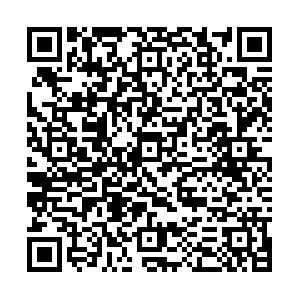The Current Situation, Problems and Solutions of Discourse System Construction of the BRI and Community of a Shared Future
-
摘要:
文章利用读秀、知网、推特、智库等资源库对2013-2017年间国内外有关“人类命运共同体”、“一带一路”研究现状进行数据分析。结果显示,国内“一带一路”背景下的沿线各国基础设施、经济、金融、地缘关系等研究火热,相关政治话语及核心概念“人类命运共同体”研究偏冷,存在虚化、泛化现象;境外舆情研究得到了前所未有的关注,几乎涉及沿线所有国家和区域,但“一带一路”话语本体研究、历史资源和学理基础研究薄弱,少有对受众差异性、国外媒体的误读、质疑及零报道开展针对性研究,“一带一路”话语体系构建有待进一步完善。据此,文章将“人类命运共同体”与“一带一路”进行整合,再符号化为“一体一带一路”,进而提出建设性意见,以便深入认识其与中国对外政治话语体系构建的关系,推进中国政治话语体系创新研究。
Abstract:This paper uses the databases of Duxiu, CNKI, Twitter and Think Tank to examine the academic achievements related to the Belt and Road Initiative (Hence BRI) during 2013-2017. The findings demonstrate that at home the research on the infrastructure, economy, finance and geopolitics under the context of BRI is the major concern, while the research on political discourse and community of a shared future draws little attention. Foreign public opinion research has
-
[1] 巴赫金.巴赫金全集[M].石家庄:河北教育出版社.1998. [2] 孙吉胜.“中国崛起”话语对比研究[M].北京:世界知识出版社.2015. [3] Habermas, J. Law and morality[A]. In McMurrin, S. M. (ed.). The Tanner Lectures on Human Values (Vol. 8) [C]. Salt Lake City: University of Utah Press, 1988:224-227. [4] 王义桅.一带一路的国际话语权探析 [J]. 探索,2016,(2):46-54. [5] 朱威烈.理解与尊重:关于构建我国对中东研究话语体系的思考[J].西亚非洲, 2007, (12):17-24. [6] 王永贵, 刘泰来.打造中国特色的对外话语体系[J].马克思主义研究, 2015,(11):5-14. [7] 刘再起, 王蔓莉.“一带一路”倡议与中国参与全球治理研究——以话语权和话语体系为视角[J].学习与实践, 2016, (4):68-74. [8] 杨鲜兰.构建当代中国话语体系的难点与对策[J].马克思主义研究, 2015,(2):59-65. [9] 江时学.进一步加强中国对外话语体系建设[J].当代世界, 2016, (12):26-29. [10] 孙发友, 陈旭光.“一带一路”话语的媒介生产与国家形象建构[J].西南民族大学学报(人文社会科学版), 2016, (11):163-167. [11] 李伟建.“一带一路”视角下构建合作共赢的国际话语体系[J].西亚非洲, 2016,(5):76-89. [12] 朱桂生, 黄建滨.美国主流媒体视野中的中国“一带一路”倡议—基于《华盛顿邮报》相关报道的批评性话语分析[J].新闻界, 2016, (17):58-64. [13] 刘立华, 徐硕.习近平主席“一带一路”话语创新实践案例研究[J].北京第二外国语学院学报,2016, (3):19-30. [14] Swaine, M. D. Chinese views and commentary on the One Belt One Road Initiative[J]. China Leadership Monitor, 2014, (47): 1-24. [15] Casarini, N. Is Europe to benefit from China’s Belt and Road Initiative?[J]. Istituto Affari Internazionali, October 2015, (15):1-11. [16] Yu Zhong. The importance of the Malacca Dilemma in the Belt and Road Initiative [J]. Journal of Policy Science, 2016, (10): 85-109. [17] Du, M. M. China’s One Belt, One Road Initiative: context, focus, institutions, and implications [J]. The Chinese Journal of Global Governance, 2016, (2): 30-43. [18] Aris, S. One Belt One Road: China’s vision of “connectivity” [J]. CSS Analyses, 2016, (195): 1-4. [19] Onunaiju, C. Shared destiny [J]. ChinAfrica, December 2016, (12): 10-11. [20] 王义桅.欧洲对“一带一路”的真正担心[N].新加坡《联合早报》, 2017-07-07(23). [21] 马建英.美国对中国“一带一路”倡议的认知与反应[J].世界经济与政治, 2015, (10):104-160. [22] 王辉, 贾文娟.国外媒体看“一带一路”[M].北京:社会科学文献出版社.2016. [23] 魏博文, 李春姬.视觉语法视角下“一带一路”宣传片的多模态分析[J].哈尔滨学院学报, 2017, (1):130-135. [24] 唐青叶.话语政治的分析框架及其意义[J].阿拉伯世界研究, 2013, (3):94-106. [25] Shen Ao. Financial News Sentiment Analysis [D]. Hong Kong: The University of Hong Kong.2017. [26] 王文.不妨考虑设立“一带一路学”[N].人民日报, 2017-01-23(05). -

 点击查看大图
点击查看大图
计量
- 文章访问数: 694
- HTML全文浏览量: 155
- PDF下载量: 53
- 被引次数: 0



 下载:
下载:
